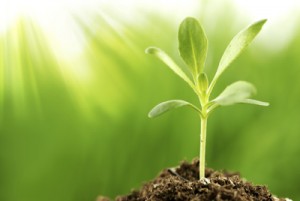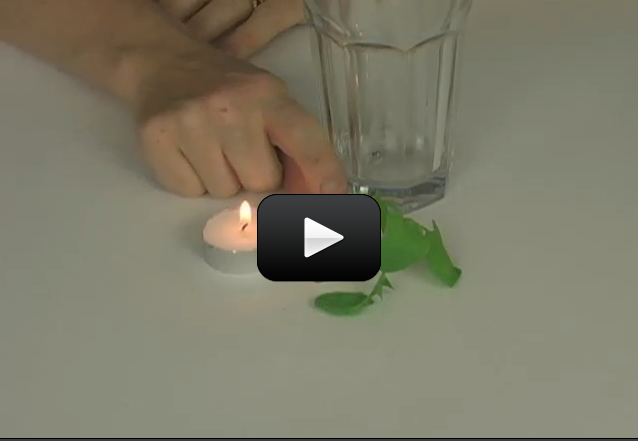 Photosynthesis is a process where light energy is changed into chemical energy. As we said in the last section, this process happens in the chloroplast of plant cells. Photosynthesis is one of the most important things that happen in cells.
Photosynthesis is a process where light energy is changed into chemical energy. As we said in the last section, this process happens in the chloroplast of plant cells. Photosynthesis is one of the most important things that happen in cells.
In fact, photosynthesis is considered one of the most important processes for all life on Earth. It makes sense that photosynthesis is really important to plants, since it gives them energy, but why is it so important to animals? Let’s learn a little more about photosynthesis and see if we can answer that question.
There are many steps to photosynthesis, but if we wanted to sum it up in one equation, it would be carbon dioxide (CO2) + water (H2O) makes glucose (C6H12O6) and oxygen (O2). These words can be written like this:
[am4show have=’p8;p9;p11;p38;p92;p26;p53;p87;’ guest_error=’Guest error message’ user_error=’User error message’ ]
6CO2 + 6H2O + Light Energy –> C6H12O6 + 6O2
Carbon dioxide, water, and energy combine to form glucose and oxygen.
We learned in the last section that glucose is a kind of sugar. This sugar is important for energy, so the plant stores all the glucose it creates. However, the plant releases the oxygen it creates.
Now we can see two reasons why photosynthesis is so important not just to plants, but to animals too. First, all animals need oxygen to live. Photosynthesis produces oxygen, so without this process, animals could not survive. Also, don’t forget that since animals can’t make their own food, they have to eat plants, or eat other animals that have eaten plants. So without plants, animals would quickly run out of food.
This experiment will demonstrate that carbon dioxide is necessary in photosynthesis.
Materials:
- candle
- lighter with adult help
- large glass jar
- stopwatch
- leafy plant (weeds work also)
Optional: sodium hydroxide and iodine
Download Student Worksheet & Exercises
1.Light your candle. invert the glass over it and time how long it takes the candle to use up all the oxygen and extinguish itself. Write this number down in your journal.
2. Find a young plant or bush, preferably with a lot of growth and leaves. Place your candle next to the plant (don’t burn your plant!) and invert the jar over it again. Use your stopwatch to time how long the candle stays lit. Write this number down in your journal.
3. Which one do you expect to take longer? What actually happened?
OPTIONAL BUT DANGEROUS…
Place the caustic soda on a disposable plate. Don’t get this on your hands or eyes – it’s very corrosive. Handle this chemical ONLY with gloves and keep away from small children and pets like dogs and cats.
Place the caustic soda next to the plant and cover with the glass. Leave this setup undisturbed for a few hours. When you’re done, take a leaf from the plant and do an iodine test on it to find out if there is starch present. Simply place a drop of iodine on the leaf. Iodine changes to dark blue when starch is present.
Exercises
- Describe the process of photosynthesis in words.
- Write the chemical equation for photosynthesis.
- What is glucose?
- Why is glucose important for plants?
- Why are plants necessary for animals?
- Does the result of the experiment depend on how large the plant is? Why or why not?
[/am4show]

